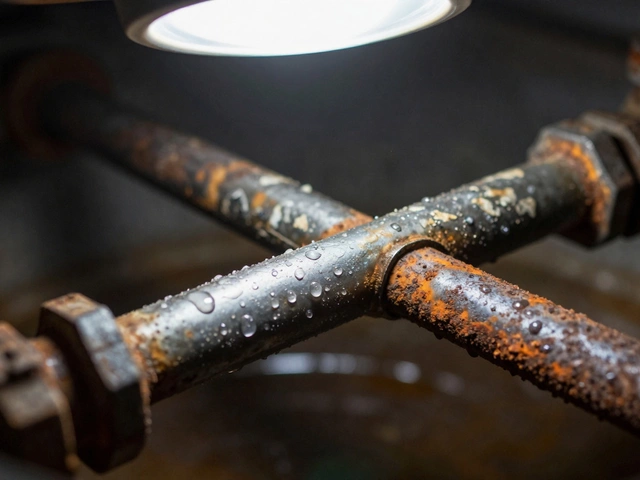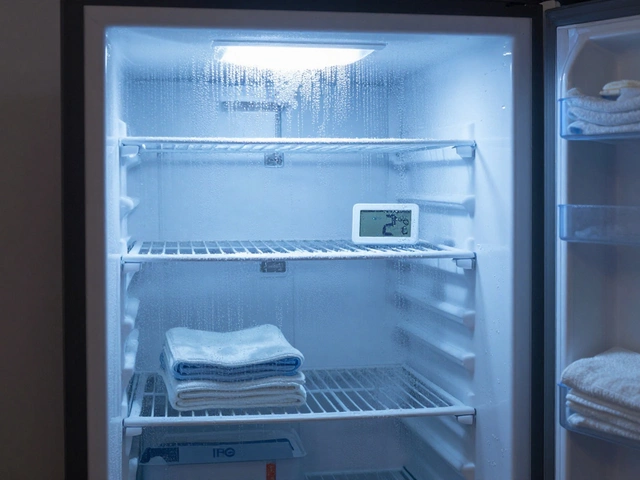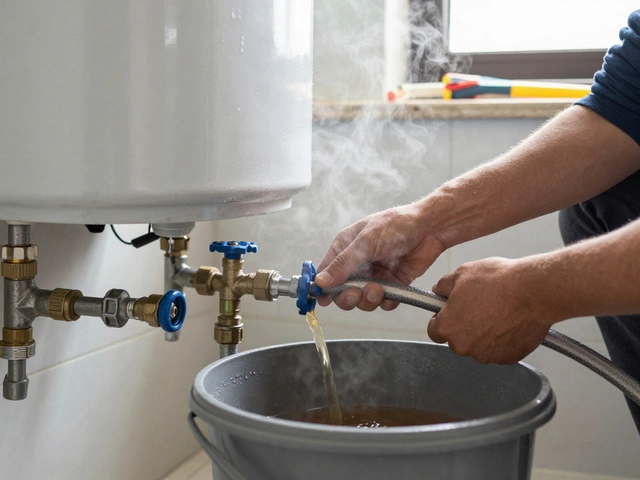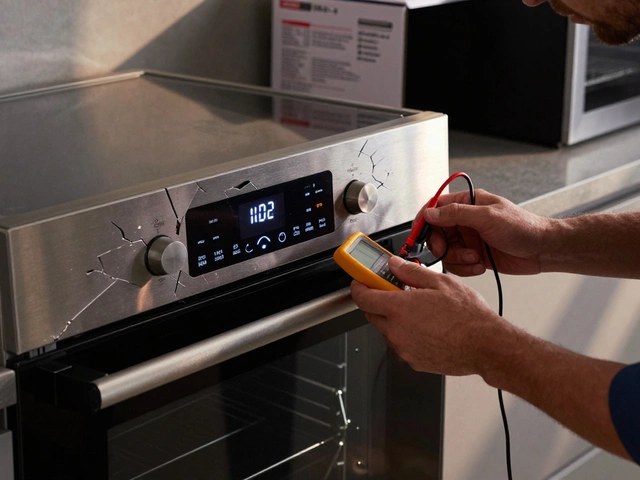Replacing a boiler can sound daunting, right? All that talk about mess and disruption might make you second guess if it's worth it. But hang on a sec, it doesn't have to be all chaos and clutter. Actually, understanding the process can really help ease those worries.
Now, first things first, why do people find boiler replacements messy? Often, it's because of the work involved to extract the old unit and slot in the new one. Plus, if there are any modifications needed to your existing setup, things might get a bit more complicated. Imagine having to move furniture around, rolling up carpets, or even redoing some pipework—it can look like a hurricane hit your living room.
But here's a pro tip: you can actually minimize the mess with a bit of prep. What do I mean? Simple stuff like clearing the area, protecting your floors with dust sheets, and securing any valuables goes a long way. By being proactive, you're halving your problems before they even start.
- Understanding the Basics of Boiler Replacement
- What Makes Boiler Replacement Messy?
- Practical Tips to Minimize the Mess
- Preparing Your Home for Boiler Replacement
- Aftercare and Maintenance for Your New Boiler
Understanding the Basics of Boiler Replacement
Alright, let’s break down what replacing a boiler is all about. Think of it like switching out an old TV for a new flat-screen. It sounds simple, but there’s a bit more to it. When you're swapping out your old boiler for a new one, there's a process that usually includes removing the old unit, making sure your system and pipes are up to snuff, and then getting that shiny new boiler in place.
Why might you need a boiler replacement? Well, over time, your boiler can become less efficient. This means it uses more energy to heat your home, which isn't great for your bills or the planet. Plus, older boilers are more prone to breakdowns, and no one likes a cold shower surprise in the middle of winter.
Steps to Consider
- Assessment: A pro comes in to evaluate your current system. They'll check if your new boiler is compatible with your existing setup or if any upgrades or changes are needed.
- Choosing the Right Boiler: This step is crucial. Picking a boiler that matches your home’s size and your heating needs ensures you’re not overspending on running costs.
- Installation: The physical act of replacing the boiler. This can take a day or two, depending on the complexity of the job.
- Testing: Once installed, everything is thoroughly tested to make sure your new system is working smoothly and safely.
A quick note: some folks find these steps straightforward, while others might feel overwhelmed. Finding a reliable and experienced installer can make a world of difference, ensuring everything goes off without a hitch.
Let’s Talk Money
Cost is another biggie. A new boiler, plus installation, can set you back anywhere from a couple of thousand dollars or more, depending on what you choose. But before you balk at the price, remember it’s an investment. A good boiler can last 10-15 years and save you money on energy bills over time.
| Boiler Lifespan | Energy Savings |
|---|---|
| 10-15 years | Up to 30% annually |
The key takeaway? Replacing a boiler isn't just a quick plug-and-play job. It’s a process that, when done right, can enhance your home’s comfort and energy efficiency for years to come.
What Makes Boiler Replacement Messy?
Boiler replacement can stir up a bit of chaos, but it doesn't have to become the stuff of nightmares if you know what's going on. Let's break down why this process can be a tad messy.
Removing the Old Boiler
First off, getting rid of the old boiler is often the deal-breaker. These units aren't exactly light or small, so maneuvering them out of their spot can be a challenge. You might have to shuffle furniture around or temporarily clear some areas. Plus, if your old boiler is tucked away in the basement or an attic, hauling it through narrow stairs or hallways can add to the mess.
Plumbing and Pipe Adjustments
Next on the list is dealing with plumbing. Your new boiler might not align perfectly with the old setup, calling for pipe adjustments. This is where things can get a bit tricky—cutting, twisting, and aligning pipes can leave behind debris and dust around the workspace.
Dust and Debris
The worksite can get dusty, especially in homes where the boiler is located in a frequently used space like the kitchen or utility room. Bits of drywall, paint chips, or insulation particles might scatter around, which isn't great for those sensitive to allergens.
Structural Changes
In some cases, structural changes are needed. If your new boiler is a different size or type (like switching from a traditional to a combi boiler), this could mean drilling holes or even making a bit of extra room. Such changes inevitably add to the messiness factor.
Wiring and Electrical Adjustments
A crucial step often involves updating the wiring or electrical components to meet new standards or accommodate the boiler installation. Cutting into walls for running new cables can be a part of this, leaving behind some mess that needs to be addressed.
Unforeseen Problems
Lastly, let's not forget the unpredictable. Sometimes electricians, while performing a boiler replacement, encounter unseen issues like corrosion in pipes or unexpected leaks. Tackling these can stall the process and add to the mess.
While these factors might seem overwhelming, being prepared with a clear plan and support from experienced professionals can make everything way more manageable. Turnover a new leaf in your home and rest easy knowing what's in store!

Practical Tips to Minimize the Mess
So, you're gearing up to replace that creaky old boiler, huh? One of the burning questions you might have is how to keep the chaos to a minimum. Well, you're in luck because there are some smart ways to tackle it.
Plan Ahead
Proper planning is half the battle won. Before the boiler replacement kicks off, consider having a chat with your installer. Get a clear understanding of the timeline and what's actually involved. This way, you're not left blindsided by unexpected surprises. Ask them if parts of your home will be out of bounds. Also, if you're up for it, offer to move heavy stuff out of the way yourself—it’ll probably save you some money, too.
Protect Your Space
Nobody likes a house filled with dust. Use dust sheets or plastic coverings to protect carpets and furniture. Don’t forget to cover any nearby electronics. If you've got access to them, zippered dust barriers are pretty neat for sealing off work areas from the rest of your home.
Clear the Area
Make the job easier by clearing out the workspace ahead of time. Think of it as a good reason for a mini spring-clean. Clear away any clutter around the boiler and in the path the workers will take to get to and from it. This not only prevents damage but also speeds up the entire process.
Seal Off Doorways
To contain the dust, consider sealing doorways with plastic sheeting or removable masking tape. This strategy keeps the mess from wandering into other parts of your home. It's like keeping the monster in one room instead of letting it roam free!
Inform Your Family or Housemates
Keep everyone in the loop about when the boiler installation is happening. This way, they can plan their own activities and won't get caught in the middle of the ruckus. Nobody wants to work from home next to a construction zone.
Be Ready for Unexpected Issues
The reality is that old homes and systems can hide things behind walls that might need extra attention. Being prepared with a little extra time in your schedule or budget (just in case) keeps stress levels low. You never know if you’ll face a rusty pipe or outdated wiring.
By following these tips, you turn the worry of replacing a boiler into just another day of home improvement bliss!
Preparing Your Home for Boiler Replacement
Alright, so you're all set to tackle the boiler replacement. But before the techs arrive, there's some groundwork you'll want to cover to make sure the process runs smoothly.
Clear the Area
One of the first steps is making sure the work area is clear. This means moving furniture, rugs, and anything valuable out of the way. You don't want a stray elbow knocking over your favorite vase, right? Make a clear path for the old boiler to be moved out and the new one brought in.
Protect Your Floors and Furniture
Even if the pros coming in are super careful, there's always a chance of scuffs or dirt. Lay down dust sheets or old newspapers to protect your flooring. And for heaven’s sake, cover the furniture with plastic wrap or something similar to ward off dust and debris.
Ensure Accessibility
Installation teams need space to work efficiently. Check that access points like doors or windows near where the boiler installation will occur are easy to access. If there are any obstructions, it might slow the process down and extend the mess.
Check Your Utilities
Make sure that the gas, electric, and water supplies are functioning and ready for the switch. An unexpected failure in these areas could postpone your replacement, leaving you in the lurch, especially in chilly weather.
Communication is Key
Don't forget to have a quick chat with the installers about your expectations. If there are specific areas you want to keep super tidy or certain pipe paths you'd prefer, let them know beforehand. After all, a little planning goes a long way in reducing stress and mess.
Organize Help If Needed
If you’ve got a busy schedule or simply need an extra hand, arranging for help from friends or family to assist with the clearing and covering can be a lifesaver.
By taking these steps, you're not just preparing your home—you’re buying yourself peace of mind. Setting up for a smooth boiler replacement means less mess, less stress, and hopefully, less cleanup afterward.
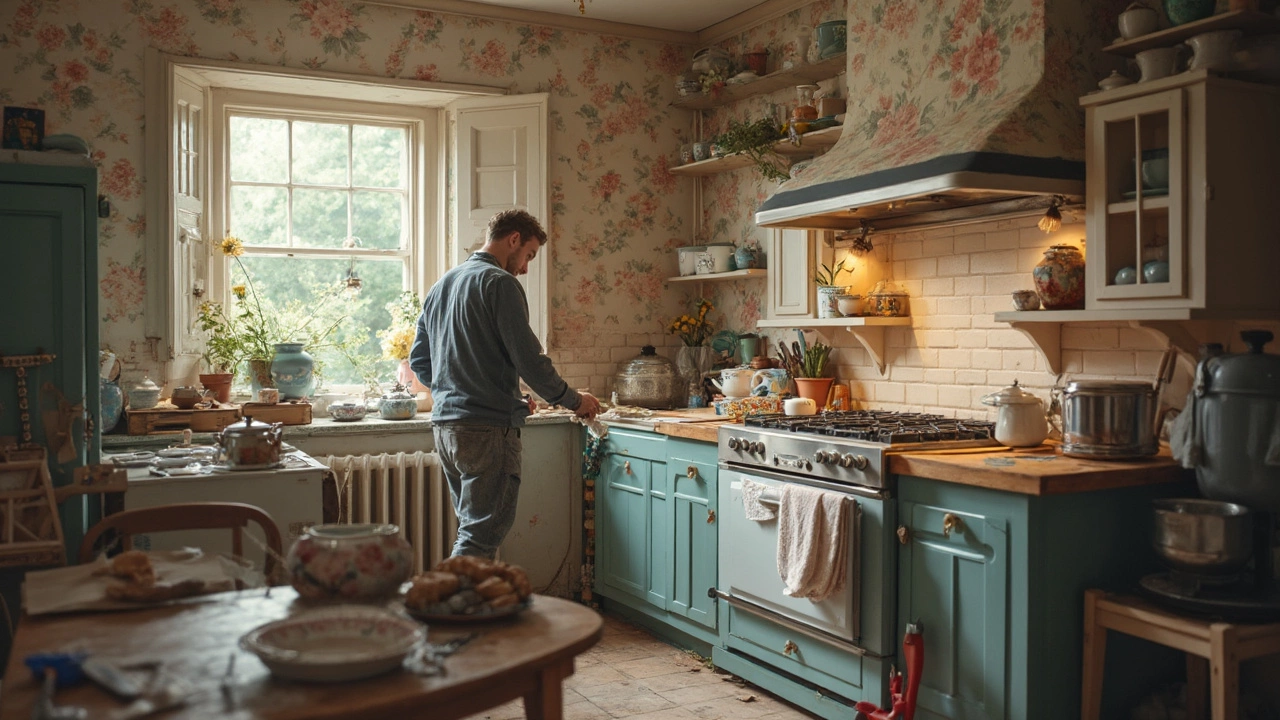
Aftercare and Maintenance for Your New Boiler
Once you've got a shiny new boiler installed, giving it the right TLC can make a world of difference. A proper care routine not only ensures it runs efficiently but also helps prevent those dreaded breakdowns. So, how do you keep your boiler in top shape?
Regular Check-Ups
Just like your yearly health check, your boiler needs some love too. Schedule an annual service with a certified professional. They'll not only check the health but also tweak it for optimal performance. According to the Heating and Hotwater Industry Council, "An annual service is essential for safety and efficiency."
Bleed Your Radiators
Air pockets can build up in your radiators over time, leading to uneven heating. Bleeding them every so often can help—it's an easy DIY task that can lead to better heating efficiency. Remember, the warmth should greet you evenly across rooms!
Monitor Pressure Levels
Boilers work best within specific pressure ranges. Check your boiler's pressure gauge regularly and adjust as needed—most have easy-to-follow instructions right on the unit. Low pressure? You'll likely face less heating efficiency; too high, and it might trigger safety issues.
Keep an Eye on the Flame
Take a peek at the pilot light every now and then. A healthy flame should be blue. If it turns yellow or orange, it's time to call in the pros. It could indicate burning problems or a dangerous carbon monoxide leak.
Stay Alert for Unusual Noises
Boilers are usually rather quiet, so any odd noises might hint at trouble—think banging, whistling, or gurgling. These noises can be precursors to more significant issues, so don't ignore them.
Here’s an interesting tidbit: According to a recent survey, about 60% of homeowners reported fewer issues when they kept up regular maintenance schedules. So, keep that schedule tight, and your boiler should serve you well for years to come!





